On the problem of modern unmanned aerial vehicles in the Armed Forces of the Russian Federation
Automatically controlled weapon began to appear in the XIX century, when the mechanization of mass production began. Military experiments with cars moving without a driver (including even radio-controlled airplanes) began in the years of the First World War. In World War II, belligerents used several types of unmanned devices in combat, including remote-controlled bombs. Then followed a period of rapid development of discrete (highly specialized) analog and digital ("computer") devices, up to modern solutions based on integrated circuits (at the beginning of 2008, the "central processor" already contains more than two billion transistors *.
During the Cold War, especially at its outflow, interest in robotized technology faded noticeably, because for the success of research it was often much more important not technical attainability, but the ability of inventors to overcome bureaucratic slingshots, and often to trite the budget.
In the absence of the interest of the USSR authorities and the minimal financing of military robotics in the 1960 – 1980-s, there were only isolated projects with UAVs in our country that gave very modest results. Other countries took the lead in this market sector, in particular Israel, Japan and the USA.
In the 21 century, when the degree of “intelligence” of armaments increased sharply and the demand for modern types of armaments boomed as rapidly, all conditions for the emergence of a military robotechnical industry in Russia developed. Nowadays, billions of dollars are invested annually in this area in the countries of the NATO bloc, and the number of companies operating in this field has long exceeded a thousand.
The topic of equipping the Russian Armed Forces with unmanned aerial vehicles is difficult to call new. But the Defense Ministry has not yet been able to work out the criteria that the UAVs must meet - applicants for service in the Armed Forces. For sure, now we can only say that the Russian army intends to buy tactical and operational-tactical UAVs from all foreign manufacturers who agree to sell such a modern attribute of the armed forces to our Ministry of Defense. It is worth noting that in the matter of production of modern UAVs, foreign designers are largely ahead of our current level of domestic production of unmanned aerial vehicles both in design and equipment. It should also be said that in Russia all research and development work on projects of strategic UAVs at the moment is either not being carried out at all, or any funding, formerly small, financed by the Ministry of Defense, has been discontinued.
Experts say that before the new operational-tactical unmanned reconnaissance complex for the Russian Air Force it is necessary to set the tasks of conducting aerial reconnaissance to a depth of 700 kilometers, from small and medium altitudes, in simple and complex meteorological conditions, at any time of day and season. countering air defense and complex radio-electronic situation with the possibility of transmitting the obtained intelligence information via protected radio channels in real time with the flight range of 1800-2500 km and duration tee up to 17 hours.
In addition to the Air Force, experts assess the great need for UAVs from the Ground Forces, where there are none at all now. In particular, they consider the use of UAVs as part of the tactical level automated control system, the project of which was also repeatedly announced, but apparently failed miserably (we will consider the problems of the domestic tactical level automated control system in one of the following publications). It is believed that at least three more types of UAVs are needed. Thus, UAVs of the first type are needed to patrol areas of the area, search for enemy sabotage and reconnaissance groups, detect targets in the reconnaissance zone of the brigade, which requires drones with a combat radius of up to 50 km.
According to various experts, roughly the same parameters of a UAV are necessary for the actions of the ground forces as part of peacekeeping contingents or during counter-terrorism measures. Also, according to experts, a UAV with a radius of up to 100-150 km is required.
In Russia, a number of structures are involved in the creation and manufacture of UAVs, among which there are both serious design bureaus and completely new organizations that have appeared with their proposals for UAV models, so to speak, in the wake of heightened interest in these aircraft among state structures of Russia.
The experience of creating unmanned aerial vehicles has been accumulated in various domestic design bureaus, among them there are those who were actively involved in and engaged in developments in this field, for example, the Tupolev Design Bureau, the Sukhoi Design Bureau, or the Design Bureau. A.I. Mikoyan. His experts still in 2007, was proposed unmanned reconnaissance and strike aircraft "Skat". To date, a full-size Scat UAV model has been built, designed to work out design and layout solutions, as well as to conduct assessments and optimize its characteristics. According to information from sources close to the Ministry of Defense, all further work on this UAV has been curtailed and funding for this project at the expense of the state is not conducted.
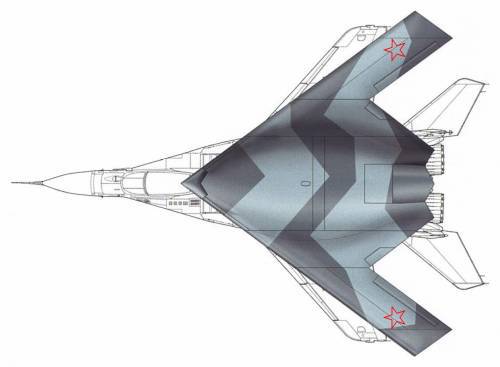
Among the relatively new developments, we can mention the unmanned aerial vehicle Tu-300 ("Korshun-U"), which was practically created "from scratch" in the OKB im. Tupolev. The Yakovlev Design Bureau staff contributed to the development of the UAV. They, practically "on a voluntary basis", are conducting research work on a number of promising interspecific multifunctional unmanned aerial vehicles aviation complexes. But I would like to emphasize that if we analyze the sites of all our leading aircraft design bureaus (both civilian and military), it turns out that none of them can find the slightest mention of the fact that these organizations are conducting any research or experimental design work in this direction. One gets the impression that over the past three years, domestic design bureaus have withdrawn themselves from this topic.
The situation is completely different for completely new companies that entered the modern Russian UAV market with their projects of small and medium aircraft. We will not make premature conclusions about the possibilities, advantages or disadvantages of their devices, we will try to focus on what these companies offer to our market. A whole series of various UAVs weighing from 5 to 240 kg was created in the company “Unmanned systems” of the AERO HALL under the direction of AV Zakharov. By the way, HALL AERO is currently the only company in Russia and the CIS that produces unmanned aircraft and helicopters. One of them, ZALA 421-20, has a wingspan of more than 2 meters and a flight speed of up to 200 km / h. It can be completed with various engines, it can carry up to 50 kg of payload and be airborne for up to 8 hours. This UAV is equipped with a stabilized electron-optical camera and can be effectively used for conducting reconnaissance and surveillance, both over land and over the sea. One of the advantages of this UAV is the ability to take off and land both as an ordinary aircraft and using a catapult and a parachute, which is especially convenient, for example, when ship-based or using mobile platforms. Among other developments of the AERO HALL there are UAVs ZALA 421-02 and ZALA 421-02X. They are able to lift into the air up to 40 kg of weight, and make a flight of up to 6 and 4 hours, respectively. All UAVs produced by HALL AERO are equipped with an on-board computer for flight control and payload and are capable of flying the program with the ability to change it quickly and transmit video in real time.
OAO Luch Design Bureau has created the Tipchak aerial reconnaissance complex, one of whose missions is to conduct reconnaissance at any time of the day in the interests of various power structures for searching, detecting, recognizing and determining the coordinates of objects in real time at distances up to 70 km from ground control station. In addition, OJSC “Luch” Design Bureau declares that this UAV has a wide potential for solving peacetime tasks, for example, monitoring the routes of trunk pipelines and woodlands. There are other domestic manufacturers of small and medium-sized UAVs, and there are not as few of them as it seems at first glance.
Understanding the potential prospects of the Russian market, a number of foreign structures are actively lobbying for the issue of cooperation with the Ministry of Defense of Russia. Some sources point out that recently certain officials of the Ministry of Defense are more and more aggressively raising the issue of purchasing foreign products, citing the technical imperfection of products of the Russian defense industry. In particular, the Minister of Defense of Russia said: "If our defense industry is able to produce such UAVs, then please, we are ready to buy them." And also: “in any case, it is possible to collect drones on the territory of Russia”.
In general, nothing is heard about the possibility of integrating the UAV into the ACS systems of the tactical level or into the technical security systems of important military facilities. Another scandal connected with the UAV is also planned: the subjective view of the leadership of the Russian Defense Ministry on the promising domestic development of weapons and equipment led to the fact that the defense minister was slipped (in the direct sense of the word) with a document of questionable content. In any case, he confirmed the fact of the purchase of several Israeli UAVs, focusing on their “high performance”. Indeed, the Israeli UAV is not the worst option. But far from the best. It is also possible to discuss for a long time about its compliance with the “efficiency / cost” criterion. At the same time, the need to support the Russian defense industrial complex is not at all willing to recall to the Russian defense ministry, some argue that now this topic has become banned and not subject to any discussion whatsoever.
Apparently, officials of the Ministry of Defense, not having had time to completely “re-reform” themselves, have already begun to engage in lobbying the interests of “foreign” manufacturers.
Oddly enough - there are questions. For example - why, in fact, the Russian Defense Ministry in general, and Russian Defense Minister Serdyukov, in particular, are so aggressively opposing Russian-made UAVs? And also - in what Summer have passed the rather big money allocated for the project of the Russian UAV?
Further, these issues will be discussed in more detail.
24 May 2010, the Russian Defense Minister (Serdyukov) publicly announced that "a special center for the use of UAVs will be created in Russia." And, allegedly, only after that representatives of the "military" will begin to formulate requirements for unmanned aerial vehicles that are planned to buy.
This is, forgive me, some kind of schizophrenia. At first, these people say that Russian UAVs "do not meet the requirements of the military." And now it turns out that we have no requirements yet - they are still only going to “form” them. So how, then, the "requirements" (and whose precisely, for that matter), "did not satisfy" the domestic UAV?
Five billion (!) Rubles spent (“mastered”) on the development and testing of Russian UAVs. And what turns out - it happened in the complete absence of specific, strict customer requirements - the RF Ministry of Defense to these same UAVs? And all the tests were conducted without any "mandatory army standards" to the test objects? Hard to believe.
It should be noted that Russian firms engaged in the manufacture of drones can already offer Russian military vehicles that are comparable in characteristics to world standards. For example, the St. Petersburg company Transas developed the heavy Dozor-600 UAV, which is a kind of analogue of the American MQ-1 Predator, widely used by US forces in Iraq and Afghanistan.
By the way, I would like to dwell on this UAV in more detail. There is such an opinion in RuNet that, among other things, our Ministry of Defense has threatened those same five billions for this UAV.
In essence, Dozor-600 is the first more or less successful reconnaissance unmanned vehicle of Russian origin.
The first preliminary information about this drone appeared during the Interpolitex exhibition in 2008. The Dozor-3 UAV (later called the Dozor-600, in accordance with the maximum take-off weight) was first presented at the MAKS-2009 air show. Now the complex is in the final stages of development.
The manufacturers of this UAV stated that it belongs to the class of heavy medium-altitude UAVs of long duration, although its classification is another matter under discussion. Manufacturers also stated that the Dozor-600 UAV solves the problem of detecting and identifying objects in real time, in any weather conditions, and at any time of the day. Data transmission goes via satellite communication channel or direct radio channel (within the line of sight).
Unfortunately, the inertia of the Russian (Soviet) military, one of the problems of the Russian army. Leskov in Lefty also made fun of it.
Interesting and more. Why did the Ministry of Defense calmly look at how billions of rubles are being wasted, and did not carry out any stage tests to assess whether the designers are working in the right direction or not.
I am not going to accuse the Defense Ministry of embezzlement - as it seems to me, it is the duty of the Prosecutor General’s Office. And at the moment, the Ministry of Defense of the Russian Federation, represented by Popovkin, accuses ALL Russian designers that they allegedly spent 5 billions and did nothing to satisfy the requests of the Ministry of Defense.
However, according to the creators of the UAV, the military has never clearly formulated the requirements that must have been implemented in drones. The industrialists had the impression that nobody in the Ministry of Defense simply understood what kind of UAVs the Russian army needs and why.
But everything seems to be not as bad as it seems at first glance, and Russian manufacturers of civilian and military unmanned aerial vehicles will catch up with “foreign colleagues” by 2013. This was stated by the general director of the concern “Vega” Vladimir Verba. “In the next two to three years there will be a breakthrough in the domestic market of this technology,” he also said.
According to him, in the next few years, the volume of the Russian market of unmanned aircraft systems will be about 300 million rubles. Verba noted that Vega developed a comprehensive program for the creation and development of UAVs in Russia from 2025, which was created on behalf of the military-industrial commission given in May to 2008.
Of course I want to believe Vladimir Verba, but, nevertheless, in April, the Russian Defense Ministry 2009 purchased the Israel 12 devices “Bird-Eye 400”, “I-View MK150” and “Searcher Mk-II” for $ 53 million. Later, the second contract for the supply of 36 Israeli UAVs in the amount of 100 million dollars was concluded, and in April 2010 became aware of the purchase of more 15 devices from Israel. Now these UAVs are undergoing comprehensive tests and are being trained by the Russian military.
More recently, Minister of Defense Serdyukov announced the launch of various types of UAVs in Russia, in which foreign companies will participate. According to the Minister of Defense, France can become one of the partners in the production of UAVs - the French side expressed such a proposal as part of the upcoming military-technical cooperation plan for 2011.
But here, everything happens as predicted by most experts. As they say "it was exactly on paper, but they forgot about the ravines." So, the negotiations on the sale of part of the Israeli UAVs to Russia are frozen. This happened after the intervention of the government of Israel. Moreover, the Israeli authorities are not just interfering, they are actively blocking a deal to sell Russia a large batch of unmanned vehicles for military needs and the construction of a joint venture.
The reason was the fear of the Israeli leadership about the receipt of technology for Russia to create silent UAVs. The transfer of technology to Russia, which, despite attempts, failed to uncover the secret of creating silent drones, has become a sensitive issue. Although no one is talking about transferring to Russia the drawings of the most modern UAVs from the arsenal of the Israeli Defense Ministry, the deal would still be a technological breakthrough for the Russian side.
It’s no secret that attempts by Russian specialists to copy technologies, including Israeli ones, did not succeed.
However, as the head of a Russian company for the production of UAVs acknowledged, the state in the person of the Ministry of Defense for all the time of the production of UAVs has not made a single order. Lobbying capabilities of Russian manufacturers are not comparable with similar capabilities of Western manufacturers. Thus, Russia simply purchases old import drones instead of stimulating its own production.
Now I think it has become clear that Russia will buy foreign military equipment. The decision is final and irrevocable and, apparently, in the near future is not subject to discussion.
[i] * Intel has released a chip containing over two billion transistors - habrahabr.ru/blogs/hardware/31409
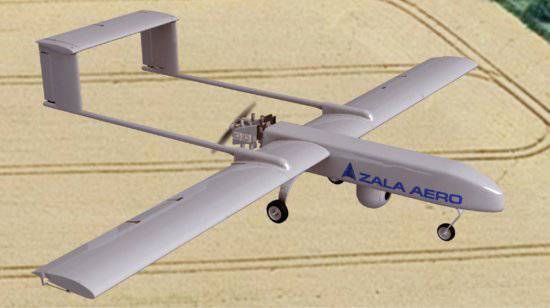
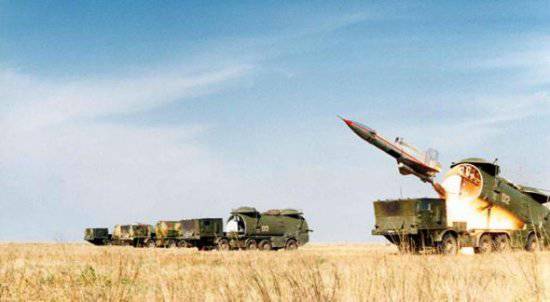
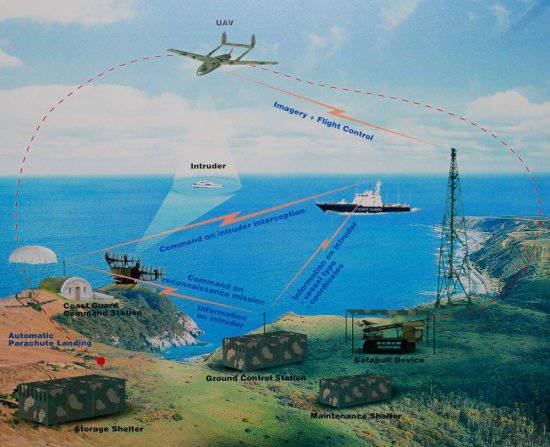
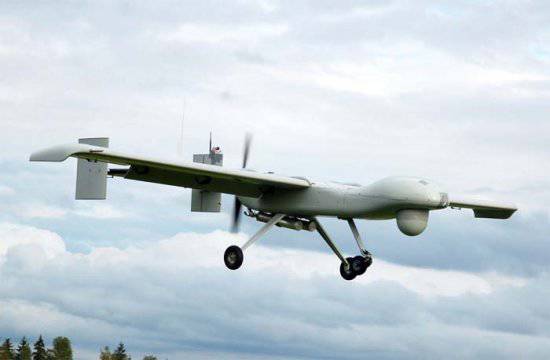
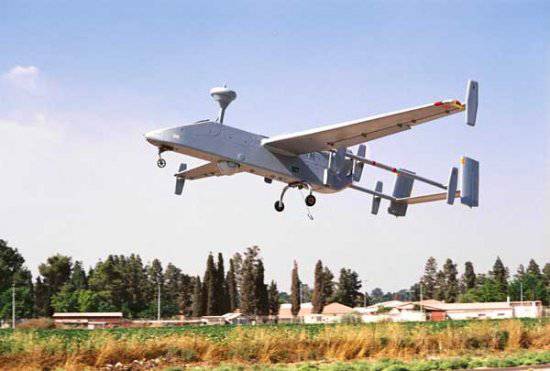
Information